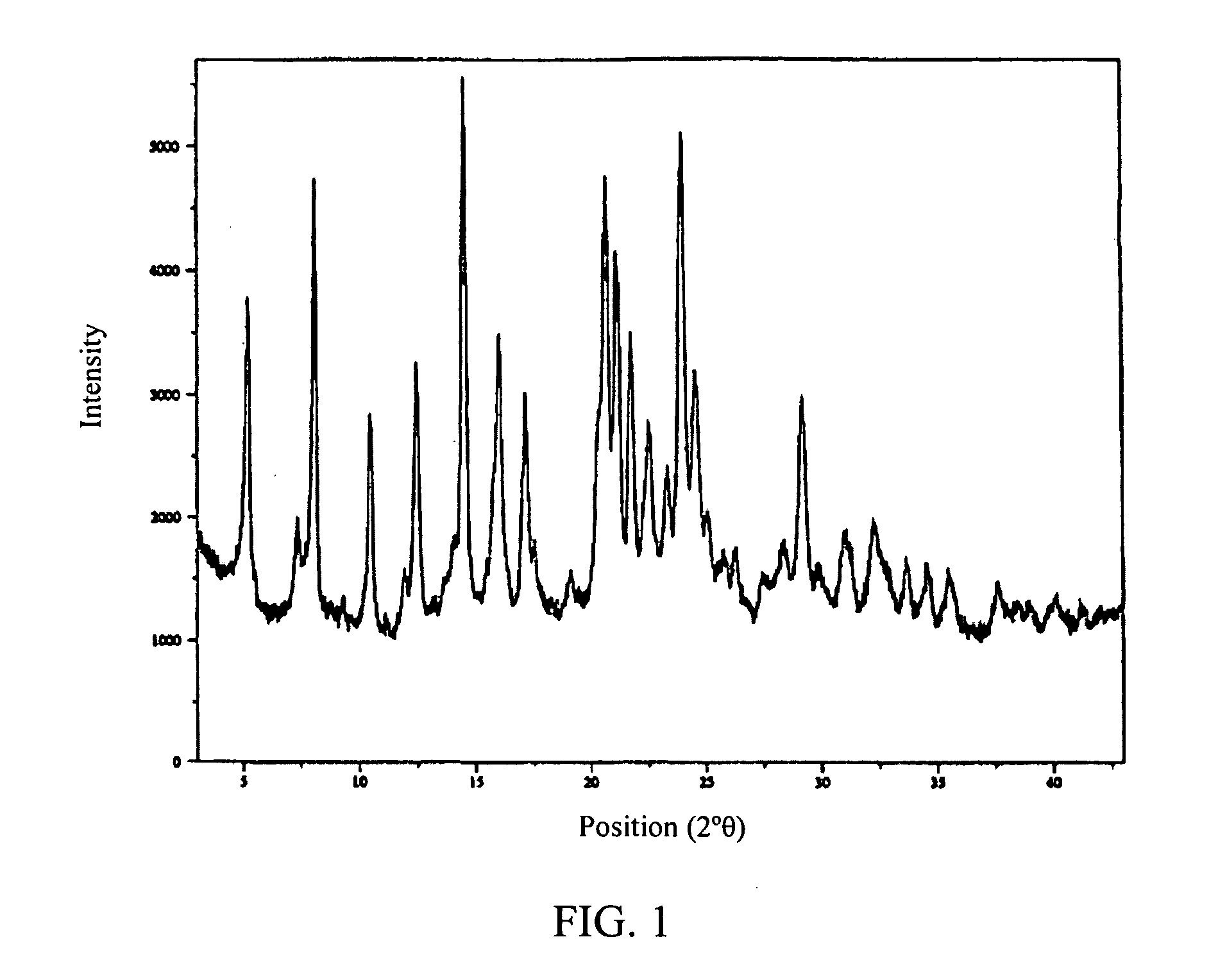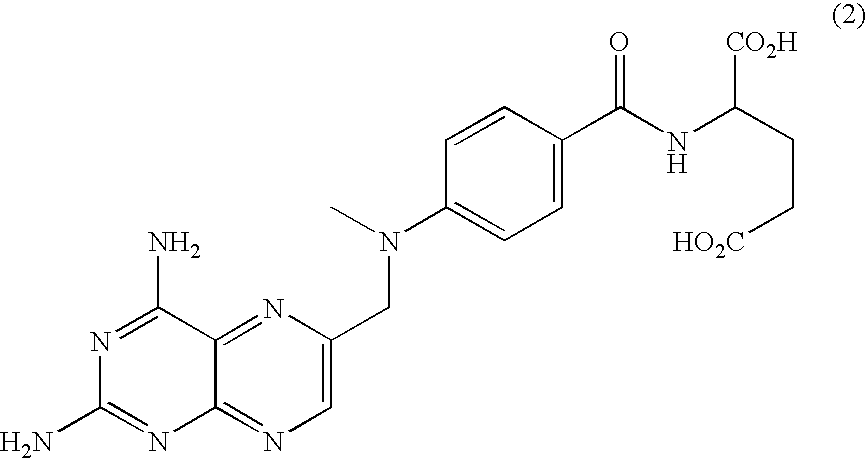Crystalline salt forms of antifolate compounds and methods of manufacturing thereof
a technology of antifolate compounds and crystalline salts, which is applied in the field of crystalline salt forms of pharmaceutically active compounds, can solve the problems of loss of drug pharmacological activity and target specificity, and achieve the effects of excellent bioavailability, improved solubility, and useful pharmaceutical compositions
- Summary
- Abstract
- Description
- Claims
- Application Information
AI Technical Summary
Benefits of technology
Problems solved by technology
Method used
Image
Examples
example 1
Salt Screening
[0194]The free acid form of the antifolate compound of Formula (9) has a crystalline structure but exhibits poor solubility. A salt screen of this compound was conducted with various pharmaceutically acceptable counterions to analyze aqueous solubility of the formed salts. The counterions used are provided in Table 1. Formed solids suspected of forming salts were analyzed by X-ray powder diffraction (XRPD).
TABLE 1Type ofType ofCounterionCounterionCounterionCounterionMineral acidsSulfuricCarboxylicBenzoicHydrochloricacidsCitricSulfonic acidsBenzenesulfonicFumaric1,2-EthandisulfonicGlycolicEthanesulfonicMaleicIsethionicDL-malicMethansulfonicOxalic1,5-naphthalenedisulfonicSuccinic2-naphthalenesulfonicDL-tartarictoluenesulfonicBasesAmmoniumAmino acidsL-arginineCalciumL-lysinePotassiumSodium
[0195]Of the various mineral, sulfonic, and carboxylic acids that were tested, crystalline salts were generated using HCl, benzenesulfonic acid, methansulfonic acid, 2-naphalenesulfonic ...
example 2
Synthesis of (S)-2-{4-[2-(2,4-diamino-quinazolin-6-yl)-ethyl]-benzoylamino}-4-methylene-pentanedioic acid, Disodium Salt
[0205]Step 1
[0206]6-Nitro-m toluic acid (173 g, 0.96 mol) was dissolved in dichloromethane (2.3 L) and cooled to 5° C. Triethylamine (146 mL, 1.05 mol) was charged over 5 minutes resulting in a clear yellow solution. The internal reaction temperature during the addition was ≦10° C. The solution was cooled to 5° C. and iso-butyl chloroformate (102 mL, 1.05 mol) was charged over 5 minutes with the internal reaction temperature during addition being ≦10° C. The solution was stirred at ambient temperature for 2.5 hours. The solution was cooled to −1° C. and liquid NH3 (90 g) was added in portions until about pH 11 was achieved, and the mixture was stirred overnight at ambient temperature. The dichloromethane was evaporated. Water (500 mL), aqueous, saturated K2CO3 (180 mL), and petroleum ether (boiling pint range 40-60° C., 1.2 L) were added tot eh crude product and st...
example 3
Synthesis of Stable, Crystalline Intermediate
[0223](S)-2-{4-[2-(2,4-diamino-quinazolin-6-yl)-ethyl]-benzoylamino}-4-methylene-pentanedioic acid (82 g, 0.18 mol) was mixed with water (250 mL). A solution of (R)-(+)-1-(2-naphthyl)ethylamine (37 g, 0.21 mol) in tetrahydrofuran (200 mL) was added to the mixture. The reaction mixture was clear filtered through a CELITE® filter. The product, (S)-2-{4-[2-(2,4-diamino-quinazolin-6-yl)-ethyl]-benzoylamino}-4-methylene-pentanedioic acid (R)-(+)-1-(2-naphthyl)ethylamine (140 g) was precipitated with tetrahydrofuran (3 L), filtered, and dried on the filter for 2 hours. The (R)-(+)-1-(2-naphthyl)ethylamine compound was a stable, crystalline salt. The overall reaction is shown below.
[0224]The stable, crystalline (R)-(+)-1-(2-naphthyl)ethylamine compound was converted back to the dioic acid form by mixing with water (300 mL) and adjusting the pH to about 13 by addition of 4 M aqueous sodium hydroxide. The reaction mixture was extracted with dichlo...
PUM
| Property | Measurement | Unit |
|---|---|---|
| temperature | aaaaa | aaaaa |
| 2°θ | aaaaa | aaaaa |
| pH | aaaaa | aaaaa |
Abstract
Description
Claims
Application Information
 Login to View More
Login to View More - R&D
- Intellectual Property
- Life Sciences
- Materials
- Tech Scout
- Unparalleled Data Quality
- Higher Quality Content
- 60% Fewer Hallucinations
Browse by: Latest US Patents, China's latest patents, Technical Efficacy Thesaurus, Application Domain, Technology Topic, Popular Technical Reports.
© 2025 PatSnap. All rights reserved.Legal|Privacy policy|Modern Slavery Act Transparency Statement|Sitemap|About US| Contact US: help@patsnap.com



